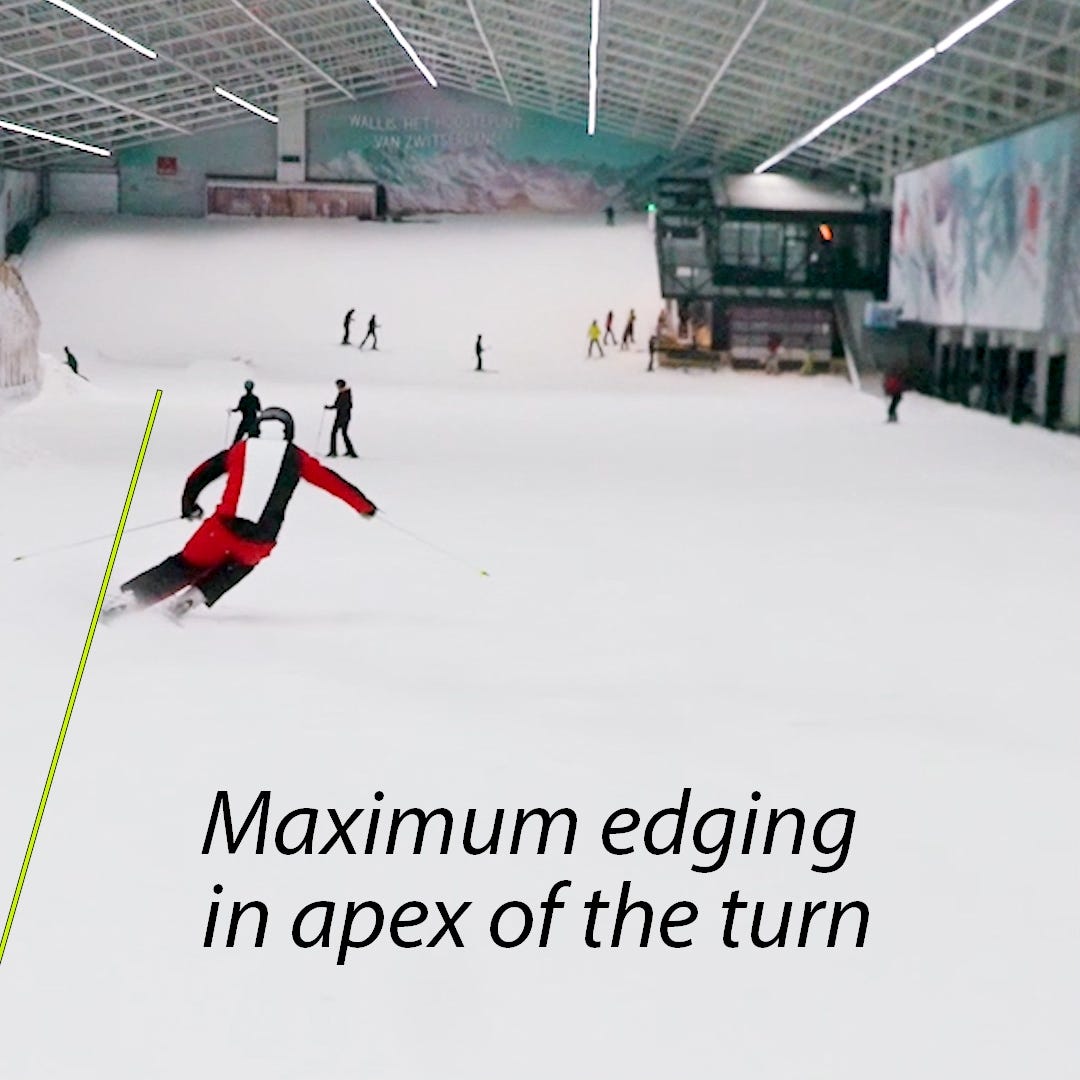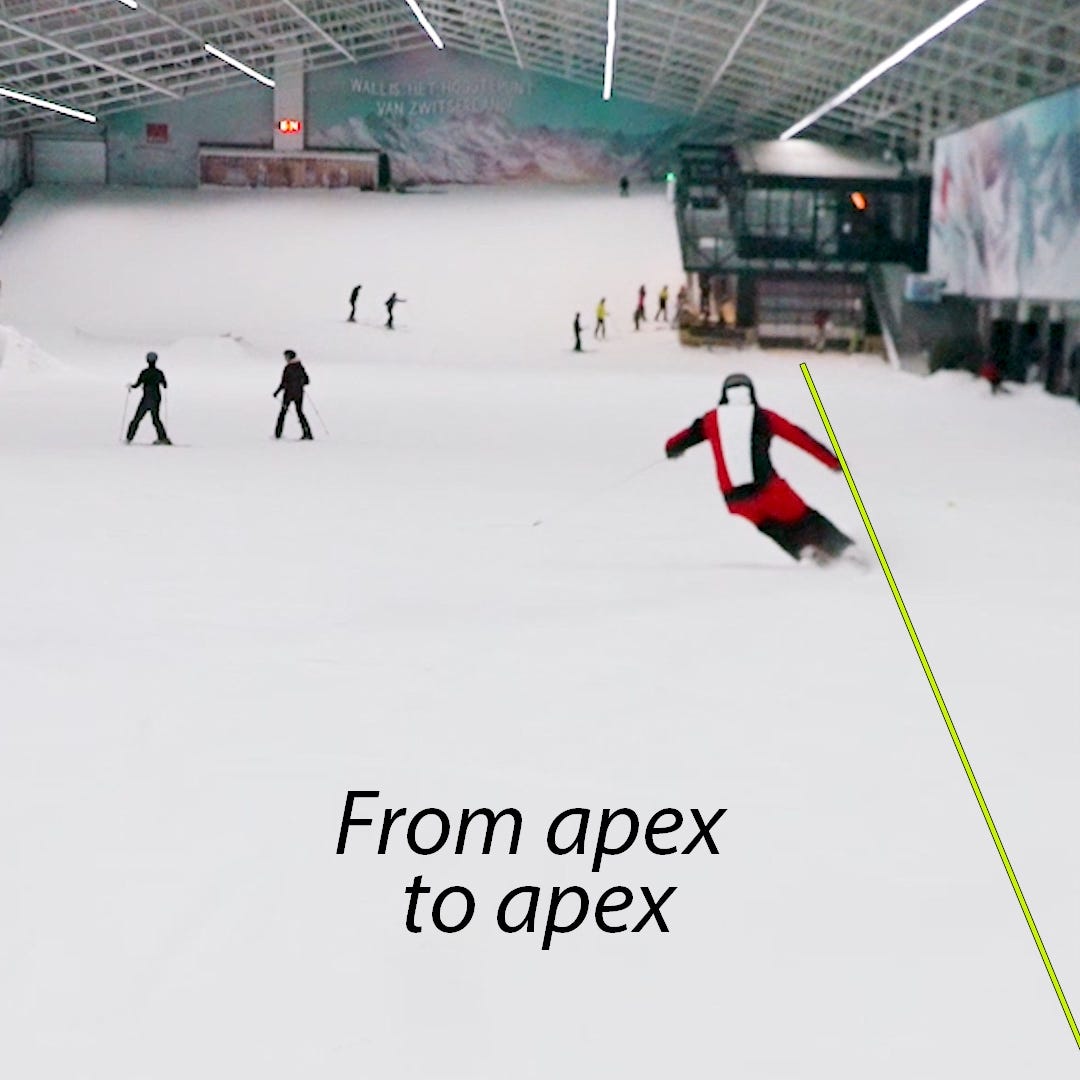The secrets of skiing with deflection: how do you maintain your speed on flatter terrain?
It may not be rocket science, but it needs a little extra explanation...
Have you ever wondered how some skiers manage to maintain their speed, even on flatter slopes? "Well Niels", you might say, "just f*cking straightline it". A good layer of wax on your skis and off you go!
But I’m talking about maintaining your speed while skiing turns, of course. 😉
To do this correctly, you need to become very, very good at timing your edging. And where necessary, you also need to adapt this timing to the terrain you are skiing on.
Let me put it this way: the edge angle of a ski can either increase or decrease. The more your skis are edged, the more energy they are loaded with because centripetal force (which acts in the direction of the turn) will begin to press against the bottom of your skis.
Good timing is when you edge your skis to their maximum in the fall line (in other words, the apex of the turn) and to start to un-edge them immediately afterwards.
When you do this, centripetal force will throw your mass sideways across the slope, well on the way to the apex of a new turn, where you can once again start edging the skis on the other side.
Maximum edging does not always have to be extreme, but the edge angle should be big enough to trigger an adequate pendulum movement.
Timing is therefore crucial. Your skis will be on edge much longer than necessary if this process of un-edging is performed too late, and this will slow them down.
The trick is to always be able to make the most of centripetal force and turn it into a process of deflection. This causes your skis to be catapulted back and forth over the hill.
At the apex of each turn, you then briefly edge the skis to charge them again with energy. Think of a spring which is tightened and released at the right moment. Edging = charging energy. Un-edging = converting energy into deflection.
These are the fundamental movements necessary to increase the edge angle of your skis (from flat to angled):
Rolling of the skis from the ankles
Flexing the inner leg
Extending the outer leg
And these are the movements required to reduce the edge angle of your skis (from angled back to flat):
Flexing the outer leg
Keeping the inner leg bent
Rolling the skis again from the ankle to the flat position
A few remarks:
To get your skis on edge, always roll them over from the ankles. If you want to increase your edge angle from there, it becomes crucial to shorten the inside leg by bending the inside knee. Bending the inside leg ensures that the hip can move both downwards and inwards. Think of raising your knee to the chest.
The more you can shorten the inside leg, the bigger the edge angle becomes. The shortening should be done from a relaxation, where it feels like the body can move in free fall to the inside of the turn, without forcing. As the inner leg bends deeply, the body's centre of gravity can move inwards, without the inner leg being able to hinder this movement any further.
Regarding stance width, the inner leg is always bent from an optimized biomechanical position, whereby the skis are at most hip-width apart. In this way, enough vertical separation can be achieved between the two feet, without further disturbing the balance.
The outer leg stretches accordingly to be able to resist centripetal force.
To decrease the edge angle of the skis again, the outer leg must flex during the transition, again from a relaxation movement. The inner leg (which now becomes the new outer leg) remains bent, and both skis are rolled over from the ankles back to a flat position.
The quality with which these movements are executed + their timing will largely determine the quality of each of your turns.
It takes some practice, but once you have mastered both, you can maintain your speed on any terrain (and that is a lot more fun, isn't it?).
Enjoy skiing!








